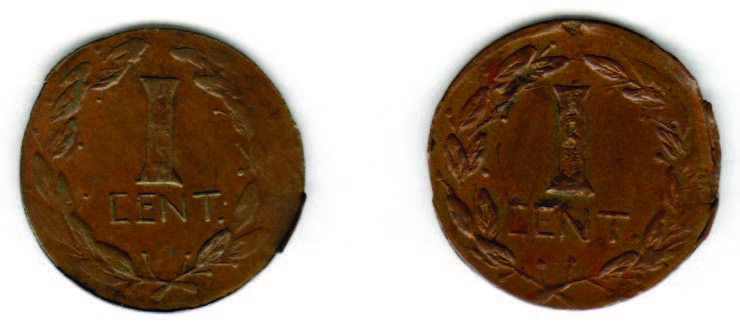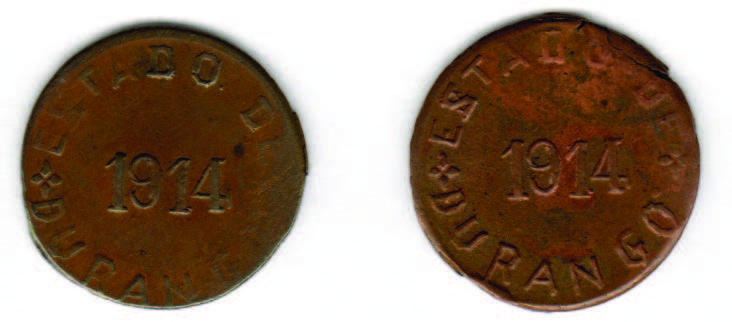Report of a new Die for the Durango 1 Centavo 1914
by Angel Smith Herrera
In the following images you will find, on the left side the previously known reverse die which was used to coin GB-105 and on the right a new unlisted die:

Old die (GB-105) New die
Guthrie and Bothamley differentiate the reverse die for GB-105 from the other dies used for centavos as follows:
- Reverse: Roman numeral I is shaded vertically.
- Middle bar of E is separated from vertical stroke, N is upright”
As you will see from the pictures, there are easily noticeable differences in the newly reported die:
1. There is a berry at the same level of the upper right side of the numeral ‘I’ (as opposed to a leaf );
2. The top ends of the wreaths are closer, leveled, and have a small die break joining them;
3. The shading of the numeral ‘I’ is grainy as opposed to being composed of vertical lines;
4. ‘N’ is re-engraved;
5. The first two berries in the lower part of the wreaths are upright;
6. The word ‘CENT’ appears to lean downward from left to right.
Other differences can be noted on the new die. Also, when examined closely, it shows several fine to heavy die-breaks from 9:00 to 11:30 on the left wreath which are hidden in the design. It is not hard to assume that a large portion of the die broke after a few strikes and rendered it unusable.
Both coins share a common obverse die.

Old die (GB-105) New die
It is not clear to me why Guthrie and Bothamley listed GB-105 after GB-102, GB-103, and GB-104 since throughout their catalog (except in some cases where they expressly mention so) they try to list the coins in the order of striking, while it is evident (based on the die break above ‘ST’ of ESTADO) that GB-105 was struck prior to GB-102 to 104. The new coin reported herein seems to have been struck after GB-105 since there is a cud below the ‘R’ on the obverse die. Such a cud seems to appear in the plate coin for GB-104 but it is unclear if GB-102 and GB-103 have it since they look to be weakly struck or worn in that area.
I tried to pair the new die with descriptions/images on coins of important collections such as Cortina and Flores but could not find a match. I was almost sure this die was going to be reported in Carlos Amaya’s recently published Compendio de la Moneda de la Revolución Mexicana since he obtained information from several collections beyond my reach, but it is not.
